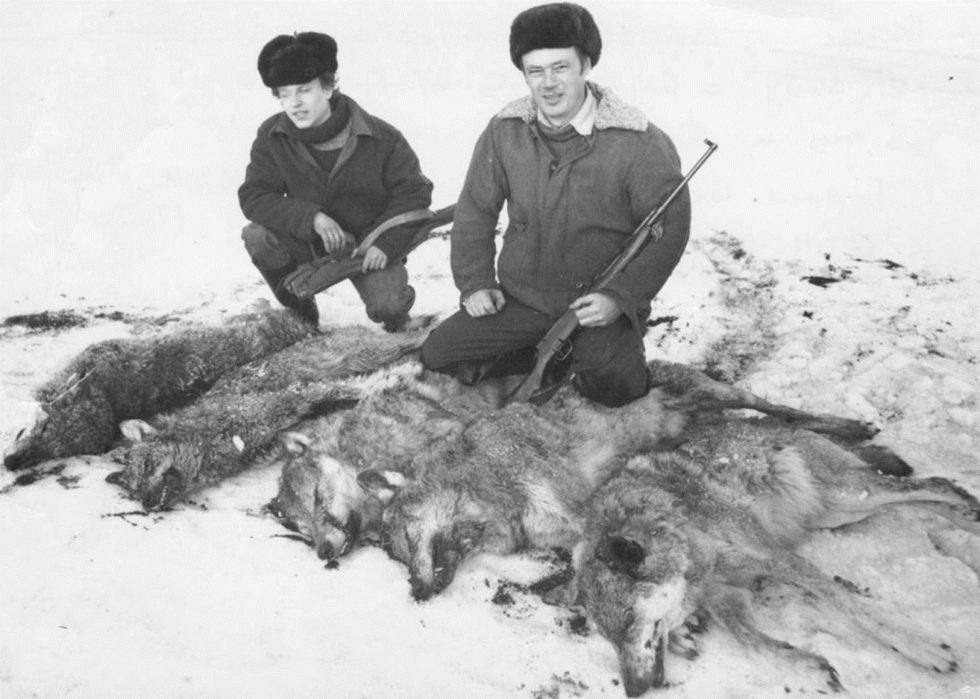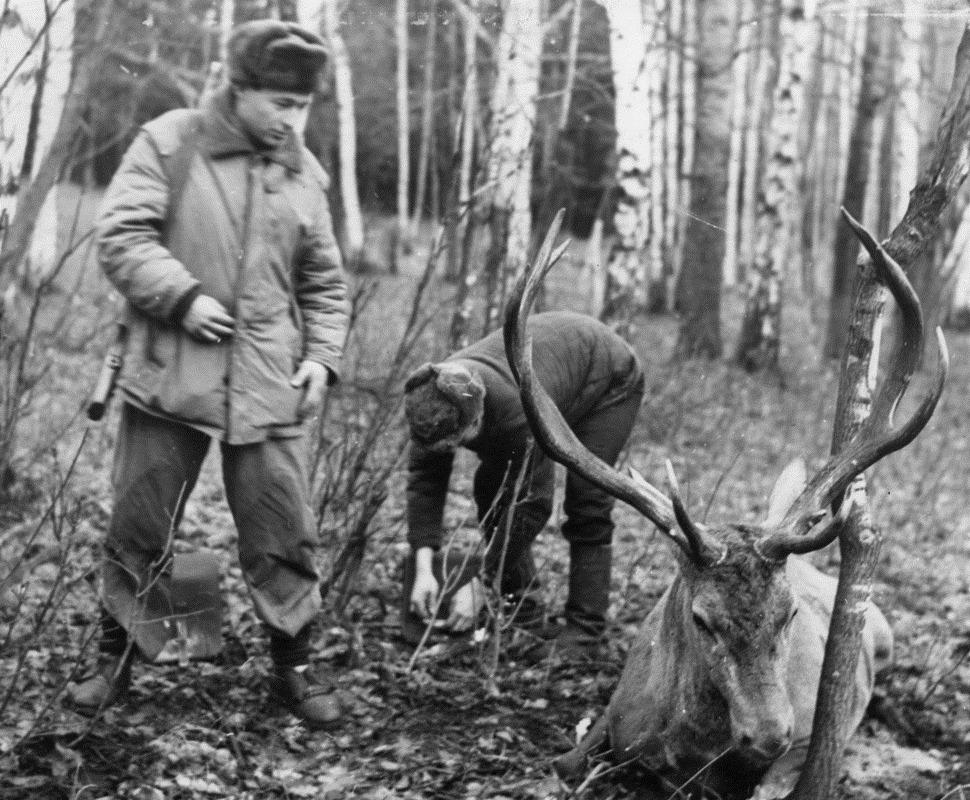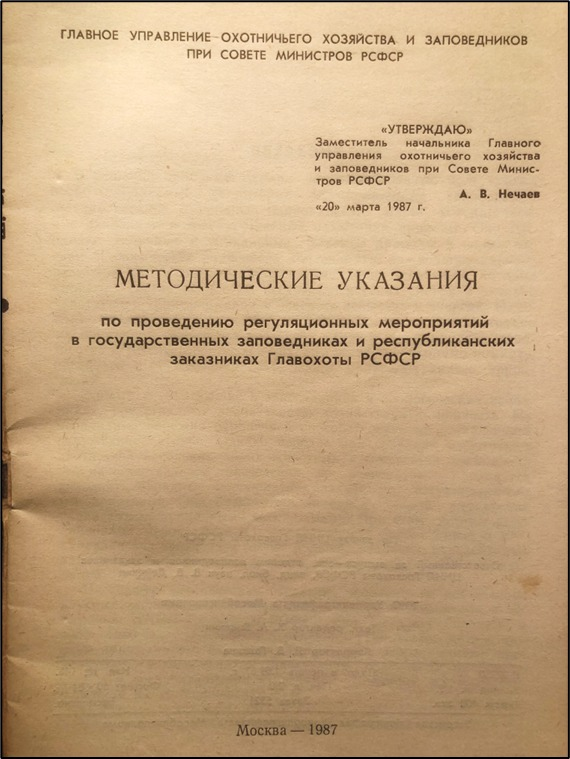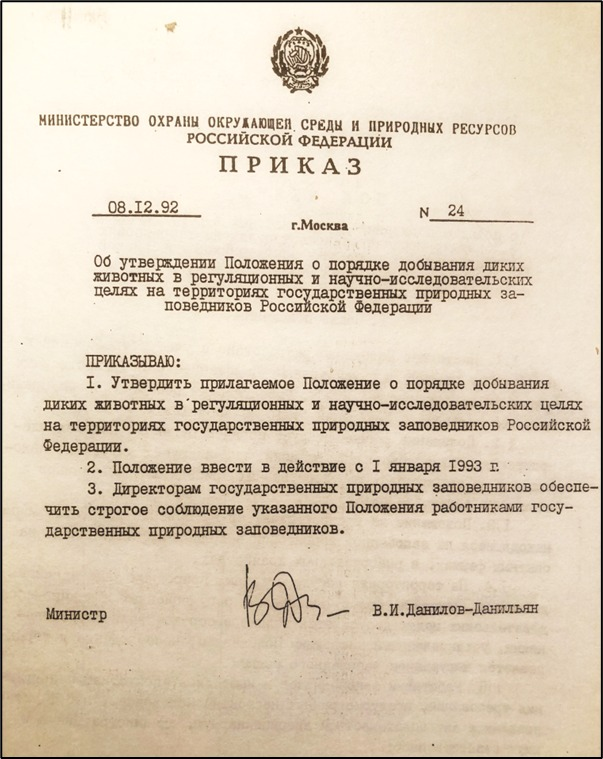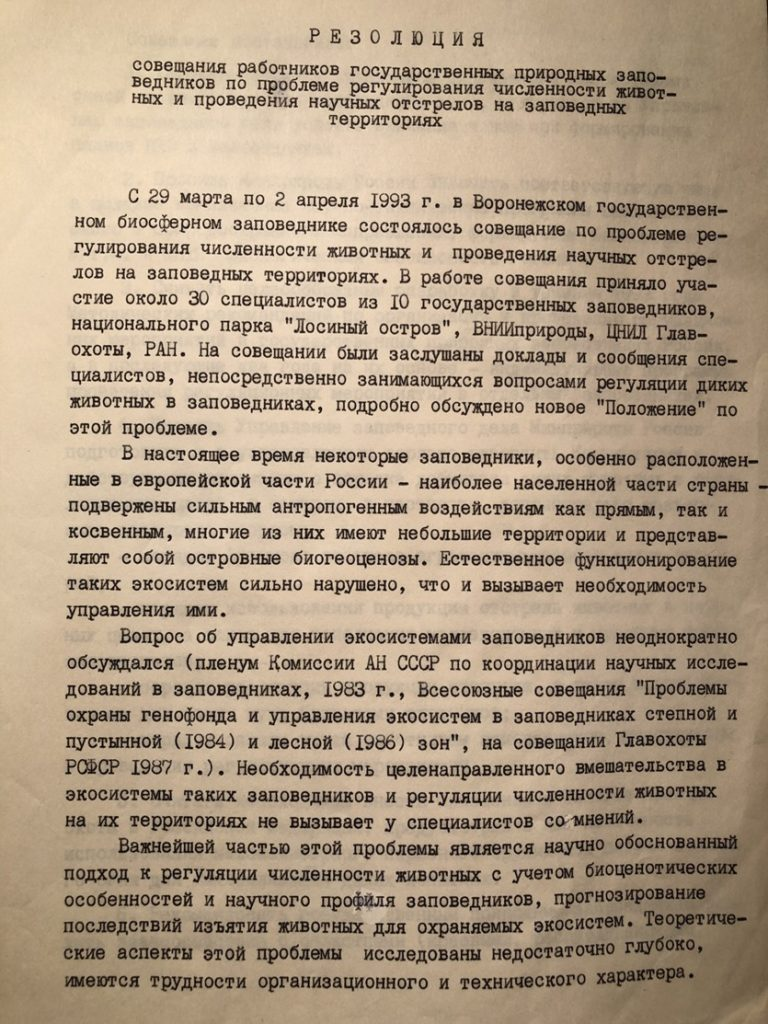October 5 at the site of the A.N. Severtsov Institute of Ecology and Evolution RAS held a thematic meeting of the IPO “Expert Council on Nature Reserves” on the issue “Current state, problems and prospects for implementing measures to regulate the number of wild animals in protected areas of federal significance”.
These regulatory measures are scientifically based actions taken in nature reserves, national parks, and wildlife sanctuaries to change or maintain the number of individual species, preserve and restore the structure of natural ecosystems, ensure ecological balance and the natural course of natural processes in protected areas.
The meeting was opened by Vyacheslav Rozhnov, Academician of the Russian Academy of Sciences, Doctor of Biological Sciences, Professor, Chairman of the Scientific Council of the Russian Academy of Sciences on the Ecology of Biological Systems.
In his report Vsevolod Stepanitsky, co-chairman of the Expert Council on Nature Reserves, Honored Ecologist of the Russian Federation, noted that conceptual approaches to carrying out regulatory activities in protected areas were formulated in the 80-90s of the last century by outstanding domestic scientists - ecologists and theorists of nature reserves, in including V.V. Dezhkin, A.M. Krasnitsky, V.E. Sokolov, K.P. Filonov.
The speaker emphasized that the implementation of regulatory measures in protected areas by shooting or trapping animals should be considered as a measure caused by exceptional necessity and having a thorough scientific justification.
The report cited numerous examples of unfounded, misconception-based and ill-conceived regulatory measures in Russian protected areas over the past half century. The speaker noted that measures for regulatory shooting or trapping of wild animals in nature reserves, national parks and sanctuaries can be allowed, first of all, as an objective need to reduce the number of certain species in order to minimize the degradation of natural ecosystems. It is unacceptable to use such events as a pretext for “meat procurement” or “hunting fun” for a number of interested parties, including employees of institutions managing protected areas. Such cases only work to discredit the ideas of conservation, incl. in the eyes of the local population.
It was also noted that when justifying and making decisions on carrying out regulatory measures in protected areas, one should fully take into account the arguments of modern science, and not rely on the postulates of the middle of the last century. In this regard, a quote is given from the famous book by F.R. Shtilmark “Historiography of Russian nature reserves”: “Until the end of his life head of the Main Hunt of the RSFSR N.V. Eliseev did not even want to hear about stopping the extermination of wolves in nature reserves, despite all the arguments of ecologists.”
In addition, the speaker drew attention to the need on the part of both managers of protected areas and officials making decisions on regulatory activities to calculate and minimize the corruption risks and opportunities for poaching associated with such activities. It is also important to keep in mind such potential undesirable consequences as increasing the disturbance factor and (in certain cases) replacing the ecological niche of wolves with “stray” dogs and wolf-dog hybrids.
During the discussion of the report, Vyacheslav Rozhnov, Academician of the Russian Academy of Sciences, drew attention to the fact that when discussing the feasibility of regulating the number of wild animals in protected areas, it is necessary to take into account differences in size, legal status, purposes of creating protected areas and - in all cases, a scientific approach to regulating the number of animals is very important, no matter what territories we are talking about. Also, according to Rozhnov, this issue requires extensive interaction between specialists from government agencies managing protected areas with colleagues from specialized academic and other institutions.
The exceptional importance of scientific justification for regulating the number of animals in protected areas was also emphasized by Sergei Naidenko, corresponding member of the Russian Academy of Sciences, director of the A.N. Severtsov Institute of Ecology and Evolution RAS.
Yuri Dgebaudze, Academician of the Russian Academy of Sciences, Head of the Department of General Ecology and Hydrobiology, M.V. Lomonosov Moscow State University, Head of the Laboratory of Ecology of Aquatic Communities and Invasions at A.N. Severtsov Institute of Ecology and Ecology RAS in his speech emphasized that protected areas are created, first of all, to preserve natural populations and ecosystems that are self-regulating: “they don’t need to be bothered, they just need to be protected.” At the same time, he drew attention to the problem of alien species, the number and distribution of which must be minimized, especially in protected areas, which is confirmed by generally accepted international practice. However, this problem does not find proper understanding from the Russian Ministry of Natural Resources.
Jose Antonio Hernandez-Blanco, Ph.D., senior researcher at the A.N. Severtsov Institute of Ecology and Evolution RAS, using the example of the wolf population structure, showed that regulatory measures can be ineffective and lead to the opposite result, for example, not to a decrease in the wolf’s pressure on ungulates, but to a noticeable increase. Therefore, the problem of regulating the number of predators in protected areas requires careful scientific research.
In his speech, Mikhail Kreindlin, a member of the Bureau of the Expert Council on Nature Reserves, emphasized that based on the analysis of published data on the regulation of animal numbers, with rare exceptions, there are no serious scientific studies of applications for regulation. He also shared examples of strange motivations for decisions to carry out regulatory measures (for example, shooting a large number of wild boars in the Meshchersky National Park, despite the decline in its numbers both in the park itself and in the region). He also drew attention to the fact that often the initiative for such events comes not from the institutions that manage protected areas, but from above, incl. under pressure from regional authorities. According to Kreindlin, the current situation with the regulation of wildlife in protected areas discredits the reserve system and the cumulative negative effect may increase. The recommendations prepared following the meeting should be aimed at changing the situation in this area.
Alexander Lipkovich, Ph.D., Deputy Director for Scientific Work of the Federal State Budgetary Institution Rostov State Nature Reserve, noted that it is necessary to separate the full regulation of the number of animals and cases when there is an objective need to remove from the territory singular individuals of large mammals that show aggression, in particular those that are dangerous for people, as well as predators that harm domestic animals. Using the example of the Rostovsky Nature Reserve, he explained that while it is obviously inadmissible to shoot a wolf in the reserve itself, there is no doubt about the regulation of its numbers in the adjacent territories represented by pasture farmland. He also recalled that there are methods for regulating the wolf population that are not related to its shooting and the presence of persons with hunting weapons in protected areas.
According to Sergei Podolsky, Ph.D., Deputy Director for Scientific Work of the Federal State Budgetary Institution "Zeya State Reserve", when developing legal norms in this area, it is important, on the one hand, to put clear barriers to unreasonable decisions, and on the other hand, not allow such rigid administration as to make it difficult to regulate where it is needed. As an example, he cited the Tokinsko-Stanovoi National Park in the Amur region, one of the tasks of which is the preservation of traditional reindeer husbandry, which is extremely problematic without regulating the number of wolves and brown bears.
Sergey Kuzmin, Ph.D., chief specialist of the A.N. Severtsov Institute of Ecology and Evolution RAS in his speech touched upon the problem of obtaining animals (with removal from their habitat) in protected areas for the purposes of scientific research and environmental monitoring. He noted that the study and monitoring of biota with large-scale removal of wildlife objects contradicts the main task of protected areas, especially state natural reserves, to protect biota. In his opinion, the need to remove a significant number of individuals from nature in order to obtain very conditional estimates of the dynamics of species numbers raises great doubts. For most reserves, the species composition of animals is known; for many species, their disappearance or appearance can be assessed by experts without removing them from nature. Kuzmin proposed introducing a system of issuing permits for research in federal protected areas without removing animals from their habitat; which should be allowed only in individual cases, but by no means on a traditional scale.
During the discussion, co-chairman of the Expert Council on Nature Reserves, corresponding member of the Russian Academy of Sciences Viktor Danilov-Danilyan, Ph.D., member of the Bureau of the Expert Council Dmitry Gorshkov, Ph.D., leading researcher at the Institute of Global Climate and Ecology Yuri Buivolov, Director of the Federal State Budgetary Institution "Baikal State Reserve" Vasily Sutula, Doctor of Biological Sciences, Honored Ecologist of the Russian Federation Yuri Gorshkov, Ph.D. A.N. Severtsov RAS – Doctor of Biological Sciences, Professor Leonid Baskin, Ph.D. Andrey Poyarkov, Ph.D. Victor Zubakin.
The meeting participants supported the recommendations voiced by the speaker and addressed to the Russian Ministry of Natural Resources with the following proposals:
— develop and adopt a legal act regulating the organization and implementation of measures to control the number of wild animals in federal protected areas, which, in particular, provide for the following mandatory requirements:
- preparation of scientific justification for carrying out regulatory activities;
- consideration of issues of population regulation at the scientific and technical councils of the Federal State Budgetary Institutions that manage protected areas;
- formation of an expert commission under the Russian Ministry of Natural Resources from among independent highly qualified specialists to consider applications for regulatory measures in federal protected areas;
- posting on the official website of the Russian Ministry of Natural Resources of information about decisions made regarding the implementation of regulatory measures in federal protected areas,
- as well as regulation of issues of disposal of hunting products in order to control the numbers.
— develop and promote a draft federal law on amendments to the Federal Law “On Hunting and the Conservation of Hunting Resources…” in terms of determining the procedure for approving the limit on the production of hunting resources for protected areas of federal significance, the regime of which allows for amateur and sport hunting.
Unfortunately, it was not possible to hear the position of the Russian Ministry of Natural Resources on the problems of regulating the number of wild animals in protected areas of federal significance - its representatives did not take part in the meeting, despite the official invitation.
Based on the results of the thematic meeting, the final version of the recommendations will be prepared, which will be sent to the Ministry of Natural Resources and Ecology of the Russian Federation.
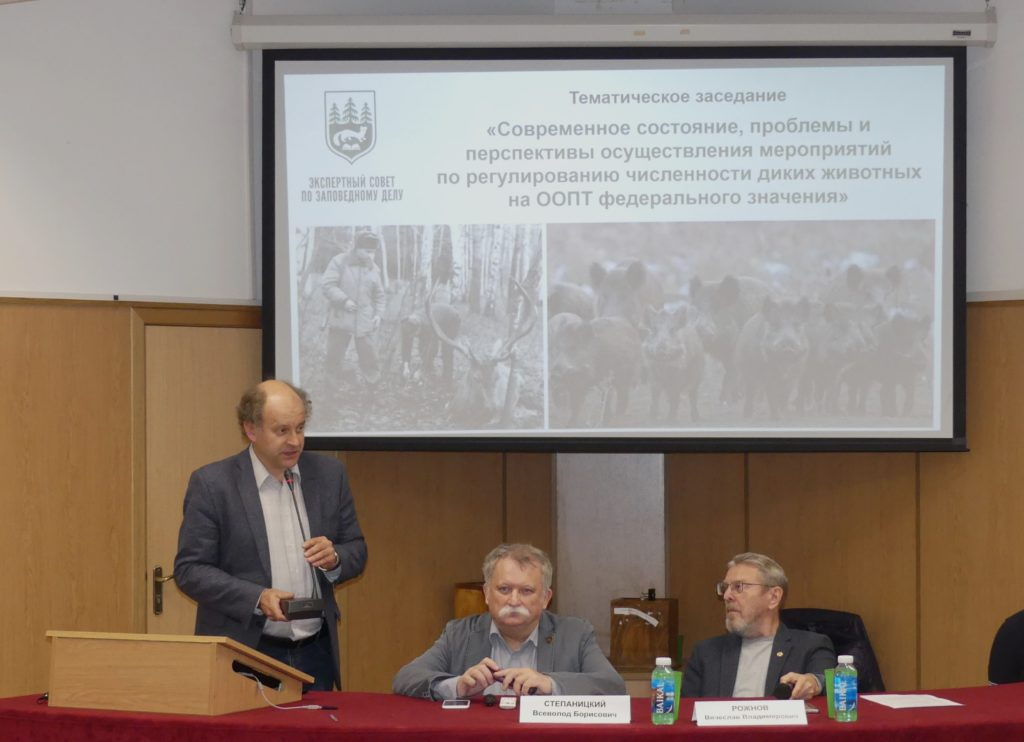
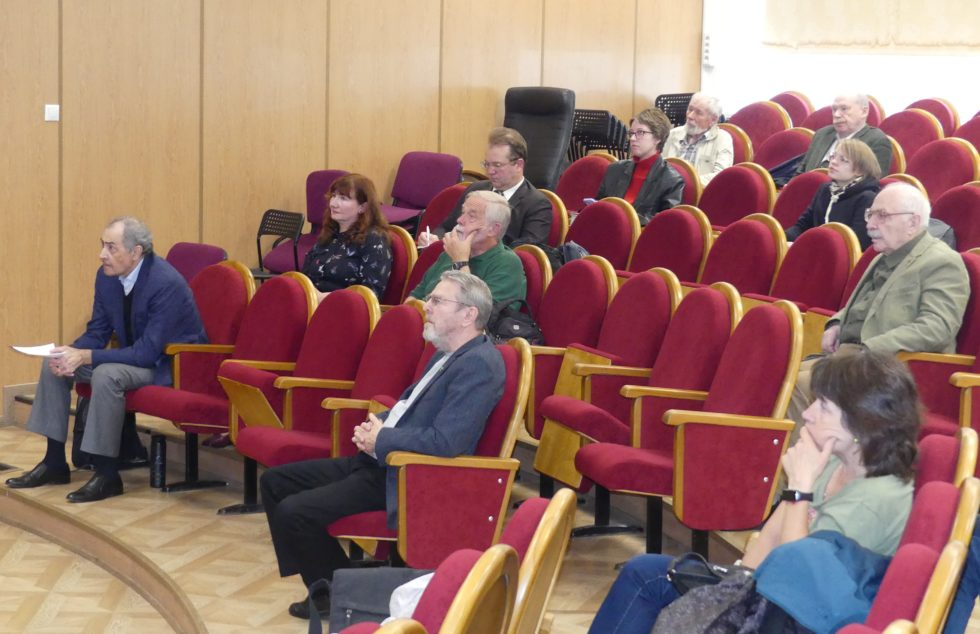

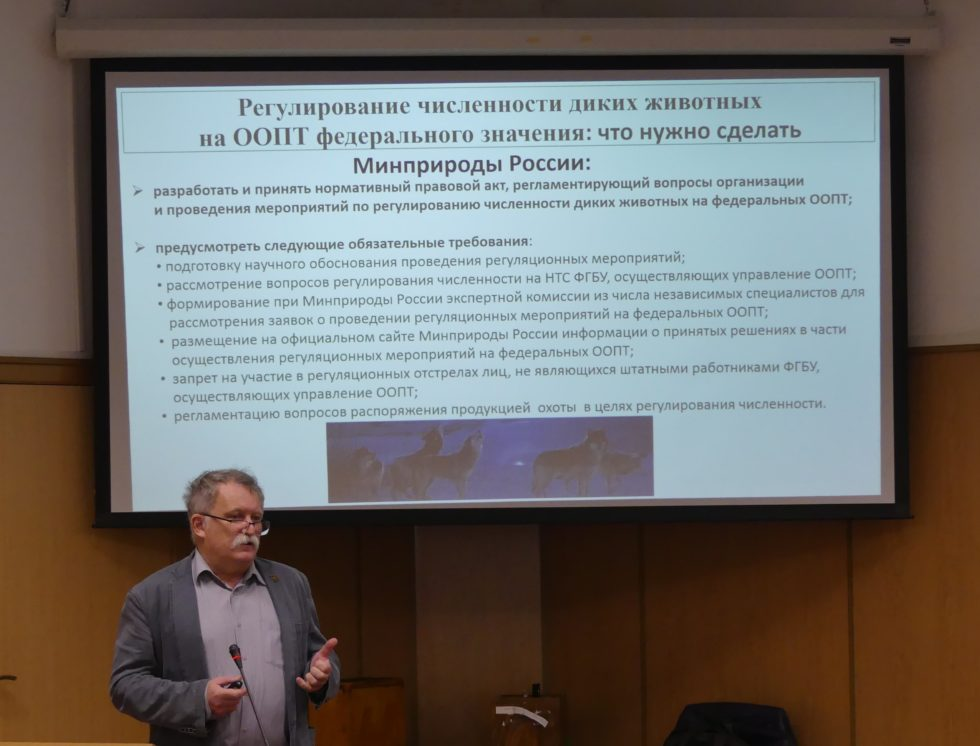
Below, snapshots of history
